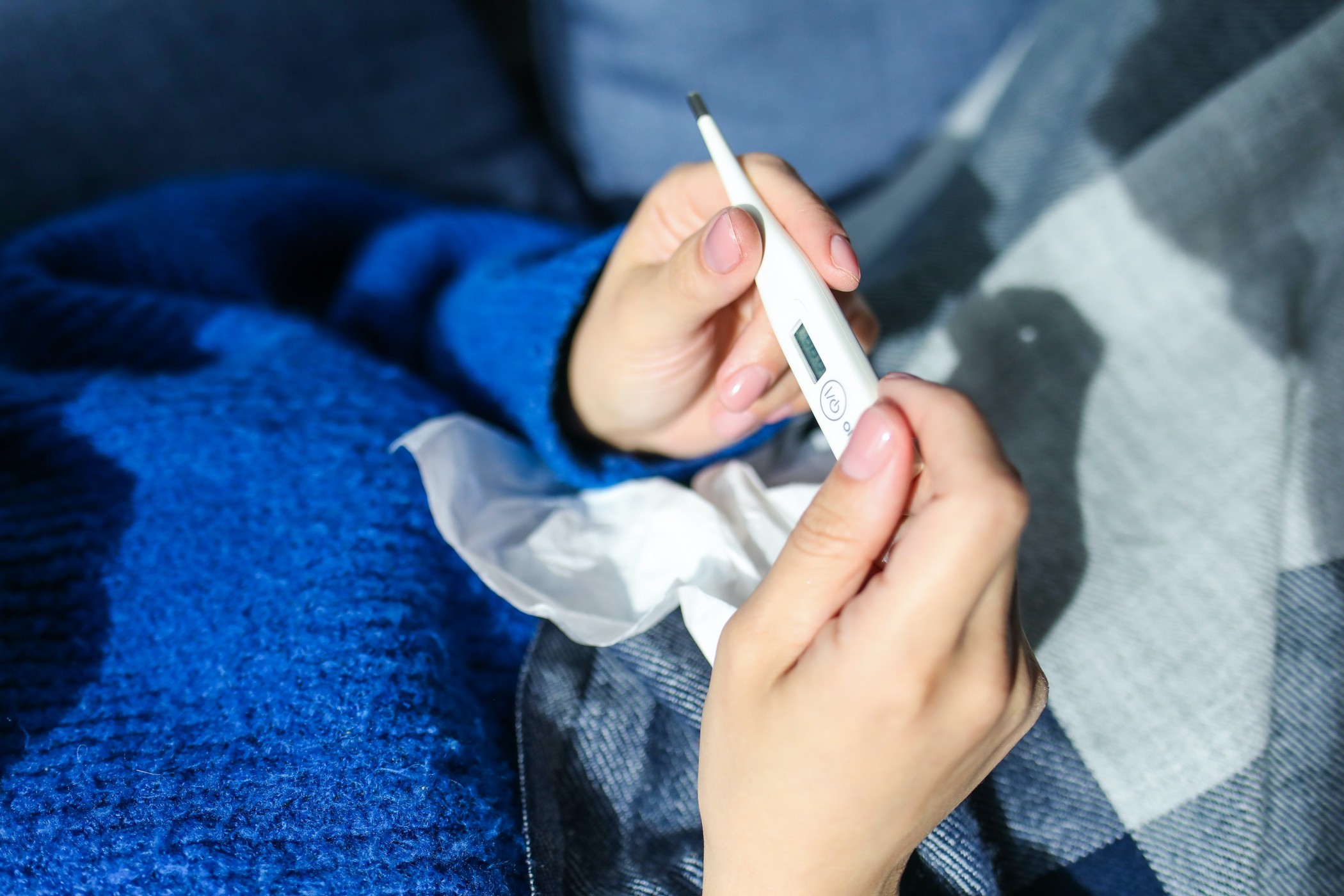Unlike bacteria, viruses don’t respond to antibiotics. In most cases, viral illnesses simply have to run their course of approx. (1 week). Staying hydrated or using over-the-counter fever-reducing medications can help until it resolves.
A viral fever is any fever that happens as a result of a viral infection. Viruses are tiny germs that spread easily from person to person.
When you contract a viral condition, such as a cold or flu, your immune system responds by going into overdrive. Part of this response often involves raising your body’s temperature to make it less hospitable to the virus and other germs.
Normal body temperature is around 98.6°F (37°C). Anything 1 degree or more above this is considered a fever. A fever can last anywhere from a couple of days to a week or longer, depending on the type of infection causing it.
While the virus runs its course, there are several things you can do to help manage your symptoms. Read on to learn more.

For children
A high fever can be more dangerous for a young child than an adult. Here’s when to call your child’s doctor:
- Children ages 0 to 3 months: Rectal temperature is 100.4°F (38°C) or higher.
- Children ages 3 to 6 months: Rectal temperature is above 102°F (39°C) and they’re irritable or sleepy.
- Children ages 6 to 24 months: Rectal temperature is above 102°F (39°C) that lasts for more than a day. If they have other symptoms, such as a rash, cough, or diarrhea, you may want to call sooner.
For children 2 and older, call their doctor if they have a fever that repeatedly rises above 104°F (40°C). Also seek medical advice if your child has a fever and:
- They seem unusually lethargic and irritable or have other severe symptoms.
- The fever lasts longer than three days.
- The fever doesn’t respond to medication.
- They don’t maintain eye contact with you.
- They can’t keep fluids down.

For adults
Fevers can also be risky for adults in some cases. See your doctor for a fever that’s 103°F (39°C) or higher that isn’t responding to medication or lasts longer than three days. Also seek treatment if a fever is accompanied by:
- severe headache
- rash
- sensitivity to bright light
- stiff neck
- frequent vomiting
- trouble breathing
- chest or abdominal pain
- convulsions or seizures
Drink fluids
A viral fever makes your body much warmer than usual. This causes your body to sweat in an effort to cool down. But this leads to fluid loss, which can cause dehydration.
Try to drink as much as you can when you have a viral fever to replenish lost fluids. It doesn’t have to be just water, either. Any of the following can provide hydration:
- juice
- sports drinks
- broths
- soups
- decaffeinated tea
Babies and toddlers may benefit from a specially formulated drink with electrolytes, such as Pedialyte. You can purchase these drinks at a local grocery store or online. You can also make your own electrolyte drink at home.
Get plenty of rest
A viral fever is a sign that your body is working hard to fight off an infection. Cut yourself some slack by resting as much as possible. Even if you can’t spend the day in bed, try to avoid as much physical activity as possible. Aim for eight to nine hours or more of sleep per night. During the day, take it easy.
It’s also best to put your exercise routine on a temporary hold. Exerting yourself can further raise your temperature.




